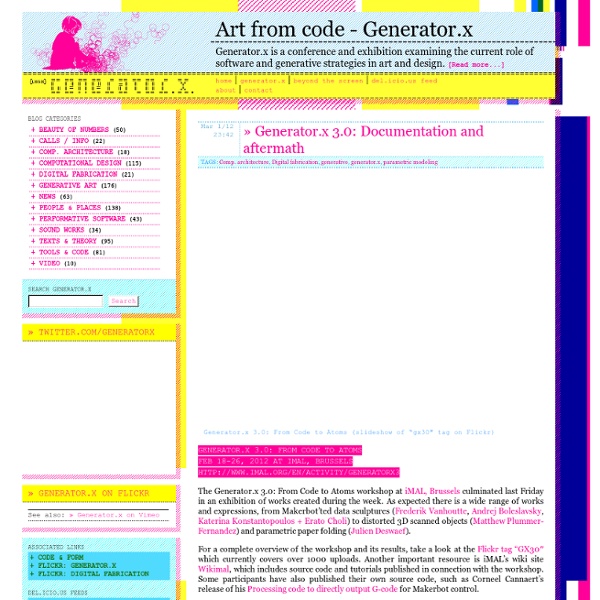



Andrew Vande Moere Homepage Generator.X blog » Sound works The early-to-mid 1990’s were an interesting time. “Multimedia” was a hot buzzword, and people were wondering if CD-ROM and Internet was here to stay. Macromedia Director ruled the world of interactive graphics, and World Wide Web and HTML was finally transforming the Internet into a visual environment. Early experiments using the web for art purposes quickly became iconic: Jodi hacked HTML, Form Art was briefly defined as a genre, Net.art considered ironic approaches to art production via this new channel and artists like Stanza explored Director as a tool for generative graphics. During this (golden) period, Vienna was a hotbed of experimentation. Among this loosely affiliated group were artists like Farmers Manual, Tina Frank, Monoscope, Pure, Lia and Dextro. Early pioneers of generative Director programming, Lia and Dextro quickly became influential both inside and outside the Director community. The original Turux.org is now offline for good, having been replaced by a placeholder.
Stuff & Things Paris MFA’s Samurais Somerville does fountains A construction worker’s hat The entire city of shanghai in GIANT model form, updated monthly. Escalators are so amazing The ceiling. InfraBodies - memes from the intersection of art, technology, and experience design
Emergence In philosophy, systems theory, science, and art, emergence is a process whereby larger entities, patterns, and regularities arise through interactions among smaller or simpler entities that themselves do not exhibit such properties. Emergence is central in theories of integrative levels and of complex systems. For instance, the phenomenon life as studied in biology is commonly perceived as an emergent property of interacting molecules as studied in chemistry, whose phenomena reflect interactions among elementary particles, modeled in particle physics, that at such higher mass—via substantial conglomeration—exhibit motion as modeled in gravitational physics. Neurobiological phenomena are often presumed to suffice as the underlying basis of psychological phenomena, whereby economic phenomena are in turn presumed to principally emerge. In philosophy, emergence typically refers to emergentism. In philosophy[edit] Main article: Emergentism Definitions[edit] Strong and weak emergence[edit]
Début Art – Illustrators and Artist Agents, London Vague Terrain | Digital Art / Culture / Technology CreativeApplications.Net | Apps That Inspire...